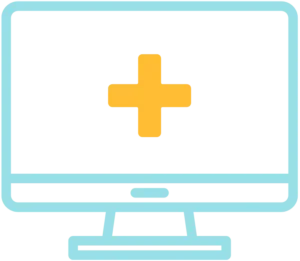Sleep Science Center
Restful Sleep for Better Health and Well-Being

Comprehensive Sleep Care
Quality sleep is essential for overall health, energy, and daily function. At the Sleep Science Center, we combine advanced technology with a personalized approach to diagnose and treat a wide range of sleep disorders.
Our pulmonologists and sleep specialists use state-of-the-art equipment and a multidisciplinary approach to assess and manage sleep disorders, including:
- Narcolepsy
- Restless Legs Syndrome
- Obstructive Sleep Apnea (OSA)
- Snoring
- Insomnia
- Other sleep-related conditions
As a nationally accredited facility recognized by the American Academy of Sleep Medicine, we are committed to delivering high-quality patient care and accurate diagnoses.
Sleep Studies for Adults and Children
We conduct sleep studies for adults and children (ages 8-17) to evaluate and diagnose sleep disorders. To learn more about scheduling a sleep study or obtaining a referral, please contact our office. If you are unsure about how to obtain a referral, our staff can guide you through the process.

A Comfortable and Supportive Sleep Study Experience
We understand that sleep studies take place in a vulnerable and personal setting. Our Sleep Science Center is designed with comfort and privacy in mind, ensuring a relaxing experience.
What to Expect During a Sleep Study
Most sleep disorders require two studies:
- Initial Sleep Study (Diagnostic Test) – Records sleep patterns, breathing, and body movements to determine the presence of a sleep disorder.
- Follow-Up Sleep Study (Treatment Adjustment) – If needed, a second study helps refine treatment, such as CPAP therapy for sleep apnea. In severe cases, treatment adjustments may begin during the first study.
In-Lab vs. Home Sleep Studies: Understanding the Difference
In-Lab Sleep Study
- Conducted overnight at the Sleep Science Center
- Includes EEG (brain wave monitoring), cardiac monitoring, and snore detection
- Data is monitored and adjustments are made remotely for accuracy
- Patients check in at 7 or 8 PM and complete the study in 7-9 hours
Home Sleep Study
- Often required by insurance companies
- Uses third-party equipment mailed to the patient with setup instructions
- Data is collected at home and sent to our Sleep Science Center for analysis
- Results are reviewed at a follow-up appointment with a physician or nurse practitioner
Patient-Focused Amenities
To ensure a comfortable and stress-free experience, our Sleep Science Center offers:
- Private rooms with full-size beds
- Male and female sleep technicians
- Patients may bring their own pillows and blankets
- Televisions in each room
- Oversized recliners for those who cannot sleep in a bed
- Daytime sleep studies for night shift workers
- Showers and restrooms for patients needing to go directly to work
- Roll-away beds for parents staying with children during their study
For more information about sleep testing and treatment, or to schedule a consultation, contact Pensacola Lung Group & Sleep Science Center.

